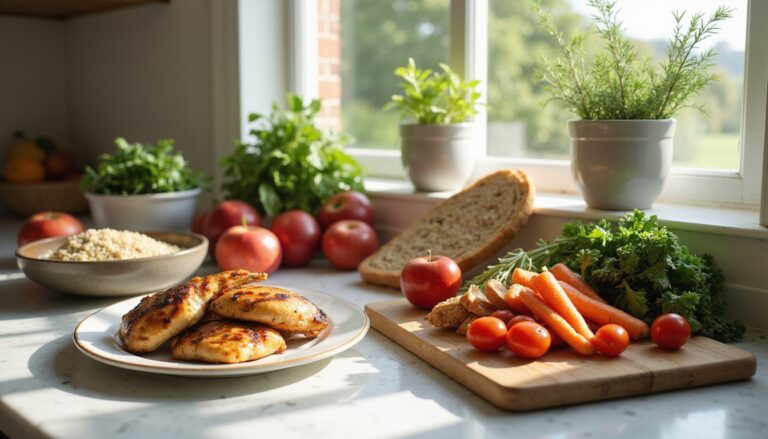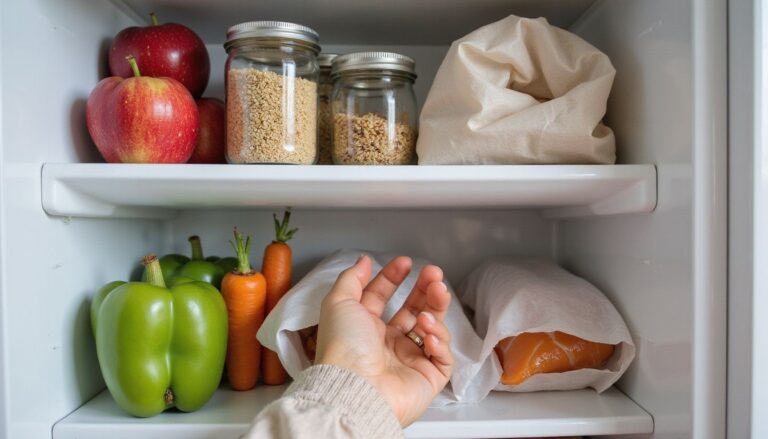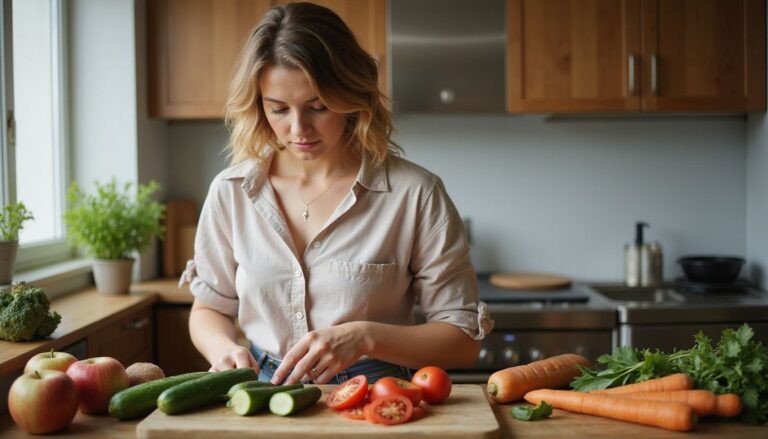High Calorie Foods For Weight Gain: Top Ways To Pack On Pounds
Our Nutrition Assistant AI Suite will transform your body. You will lose fat, get toned, and build muscle. Gain confidence and optimal health.
Gaining weight can be tough if your appetite is small or your metabolism is fast. I felt stuck until I focused on high calorie foods for weight gain, such as nuts, nut butter, whole milk, and oils. Small tweaks to meals and snacks raised my calorie intake without making my stomach feel overloaded.
Over time, I learned to choose nourishing options instead of empty junk food. In this guide, I share the foods and strategies that helped me add pounds at a steady pace. If you want simple, safe steps for healthy weight gain, these ideas can help.
Key Takeaways
- Gaining one pound usually requires about 3,500 more calories than you burn, based on NIH data from 2017.
- High-calorie choices like nuts, nut butters, whole milk, avocados, red meat, potatoes, and oily fish deliver energy plus vitamins and minerals.
- Eating five to six smaller meals or snacks and using calorie-dense toppings, such as cheese or olive oil, supports steady progress.
- Pair a higher calorie intake with strength training and at least 1.6 grams of protein per kilogram of body weight to build muscle, not just fat, as shown in a 2022 review.
- Favor nutrient-dense foods instead of ultra-processed options to support heart health while reaching your weight goals.
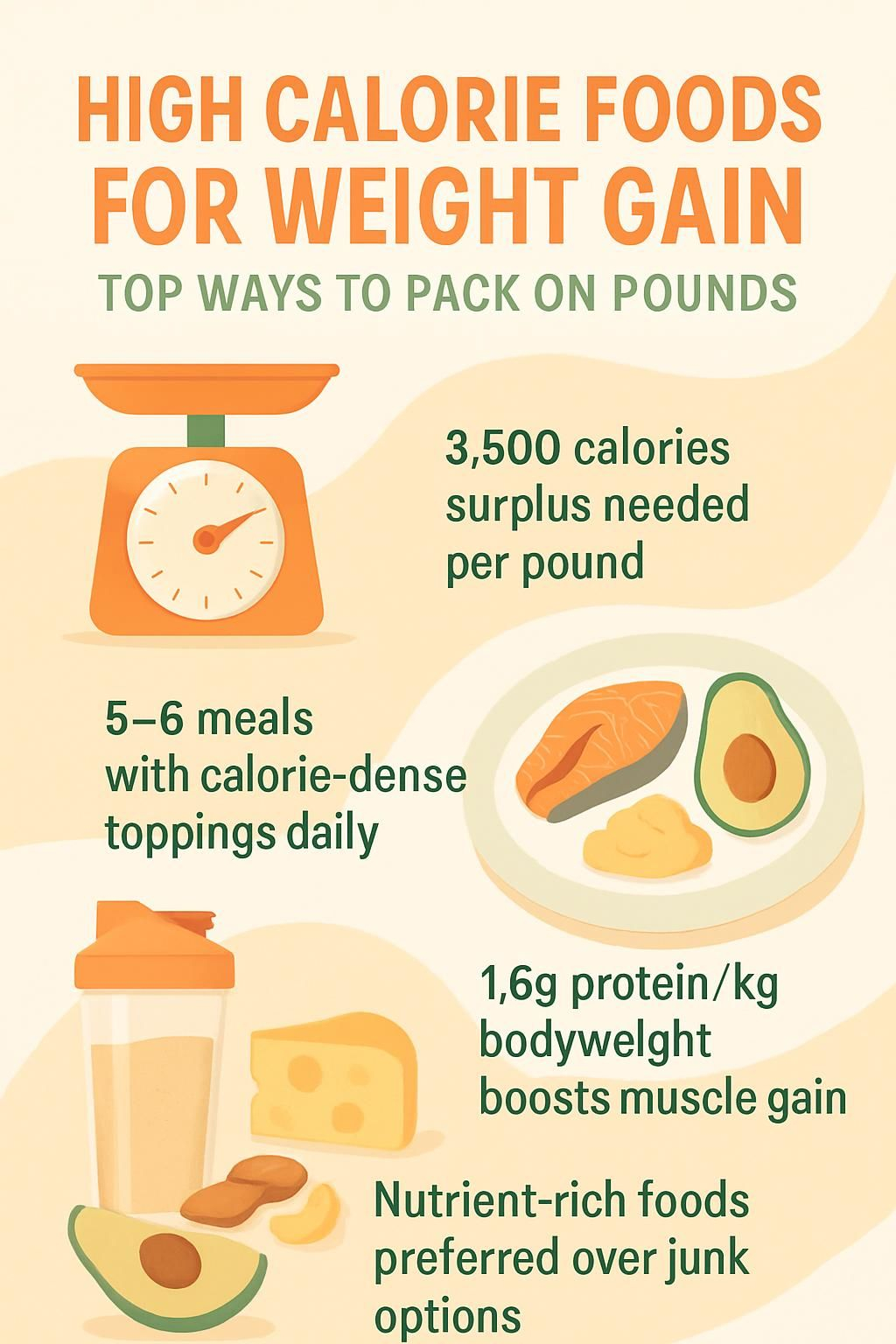
Why High-Calorie Foods Matter for Weight Gain
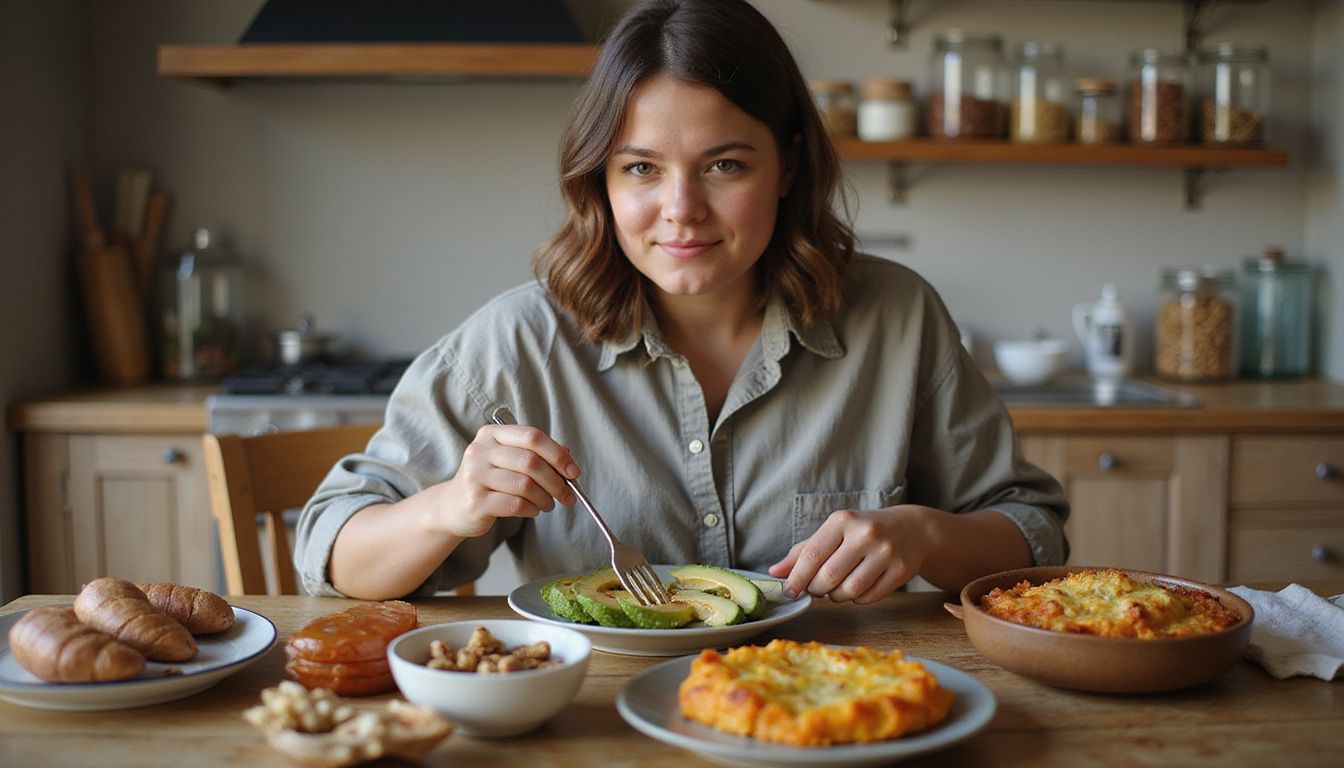
High-calorie foods supply the extra energy your body needs to gain weight. Choosing wholesome options means you get calories along with protein, fiber, and healthy fats.
What is a calorie surplus and why is it important?
A calorie surplus means I eat more calories than I burn each day. My body uses this extra energy to build muscle and store a safe amount of fat. A common guide is 3,500 extra calories to add one pound of body mass.
Calorie-dense foods, such as rice, whole milk, nuts, and oils, help me hit my target without huge portions. I saw real progress after I tracked my meals and added toppings like olive oil or cheese to potatoes and whole grain bread. A simple food journal kept me honest and made the surplus stick.
To build muscle, eat a bit more than you burn and train your muscles regularly.
What are the challenges of gaining weight in a healthy way?
Early fullness is a big hurdle for me. I often felt stuffed before I reached my goal for the day. Smaller, more frequent meals eased the pressure and raised my total intake.
I focus on calorie-dense foods that do not add much volume, such as nut butter, oils, cheese, and granola. I also swap lower calorie items for higher ones, like whole milk instead of skim in smoothies. Research suggests balanced meals every three hours work better than a few very large meals for steady results [1].
Finding nutrient-dense foods to gain weight sets up the rest of this guide.
[1] National Institutes of Health: “Meal Frequency and Timing Are Associated With Changes in Body Mass Index in Adventist Health Study 2” (2017).
High-Calorie Foods for Weight Gain
I rely on foods that pack both protein and calories. These choices make it easier to reach a surplus and support muscle growth.
What are the benefits of nuts and nut butters?
Nuts and nut butters are compact calorie sources with healthy fats. A quarter cup of almonds provides about 170 calories, 6 grams of protein, and 15 grams of fat. Two handfuls a day can add hundreds of calories without a huge plate of food.
I stir peanut or almond butter into oatmeal or blend it with banana and whole milk. One small smoothie can reach 270 calories or more. I also spread nut butter on toast, swirl it into yogurt with granola, or pair it with dried fruit. I choose 100 percent nut butter with no added sugar or oils for a cleaner option.
How do whole milk and dairy products help with weight gain?
Whole milk is an easy win. One cup gives about 149 calories and 8 grams of protein. Greek yogurt made with whole milk adds even more protein per serving. Cheese raises calories fast, with one ounce of cheddar providing roughly 110 calories and 7 grams of protein.
Milk supports muscle growth because it provides carbs, fats, calcium, and protein in one food. A 2018 study found milk can aid lean mass gains when paired with resistance training. Comfort dishes, like mac and cheese, raise your daily total with familiar flavors.
Why is avocado a good high-calorie food?
One large avocado has about 365 calories and around 30 grams of fat. Most of that fat is monounsaturated fat, which supports heart health and muscle building. It also provides dietary fiber, potassium, and vitamin E.
I add avocado to toast, eggs, salads, soups, and burrito bowls. It boosts calories without a heavy feel. Mashed avocado with lime and salt turns simple meals into calorie-dense meals or snacks.
How do eggs contribute to healthy weight gain?
Eggs are affordable, versatile, and rich in high-quality protein. One large egg has about 74 calories. The yolk holds most of the vitamins and minerals that support energy and metabolism.
I scramble or fry eggs in olive oil for extra calories, then serve them on whole grain bread or with avocado. Eggs also fit well in casseroles, rice bowls, or homemade puddings. Many healthy adults can eat up to three eggs per day, unless a doctor advises otherwise.
What role do potatoes and sweet potatoes play in weight gain?
Potatoes and sweet potatoes supply complex carbohydrates and key nutrients like potassium and vitamin C. Complex carbs digest slowly and help stabilize blood sugar. They also refill muscle glycogen, which fuels workouts and recovery.
I top baked potatoes with sour cream, cheese, olive oil, hummus, or whole milk Greek yogurt. A bowl with roasted sweet potato, quinoa, and chicken can reach about 336 calories. Potatoes also contain resistant starch, which may support gut health over time.
How can rice and pasta support calorie intake?
Rice and pasta are simple ways to raise calories. One cup of cooked white rice has about 204 calories and 44 grams of carbs. Rice is budget-friendly and easy on days when my appetite dips.
I turn basic bowls into calorie-dense meals by mixing in butter, cheese, eggs, nut or seed butter, or creamy sauces. A wild rice bowl with chicken and kale can land around 400 calories per serving. Pasta with olive oil, parmesan, and a protein like ground beef or tofu climbs quickly in calories.
Why include oily fish like salmon in your diet?
Oily fish such as salmon deliver protein, calories, and omega-3 fats. A 3-ounce serving of wild Atlantic salmon has about 155 calories, 22 grams of protein, and 7 grams of fat. Omega-3 fats support heart health and may aid muscle growth.
I use canned salmon for fast lunches, like salmon salad with olive oil or mayo. Smoked salmon on whole grain bread with cream cheese makes a dense breakfast or snack. Including oily fish during the week helps me hit calorie goals without huge portions.
How do red meats and steak aid in gaining weight?
Red meat, including steak, supplies calories, protein, iron, zinc, and creatine. A 3-ounce steak provides about 228 calories, 24 grams of protein, and roughly 2.5 grams of leucine, a key amino acid for muscle growth. Fattier cuts raise calories faster than lean cuts.
A 2022 review linked red meat with improved lean mass when combined with strength training, especially in older adults. I like grilled steak after workouts to support recovery. Many experts suggest moderating intake over time because high long-term intake has been linked with colorectal cancer risk.
What are the benefits of beans and lentils for weight gain?
Beans and lentils offer plant protein, fiber, and steady carbs. One cup of cooked lentils has about 230 calories, 18 grams of protein, and 15 grams of fiber. They help you stay full while adding calories and nutrients.
I add chickpeas or black beans to rice bowls, soups, and salads. Dietitians often recommend legumes when you need calorie-dense, nutrient-rich meals that are easy to prepare and budget-friendly.
How do cheese and cream add calories?
Cheese is a fast way to boost calories along with protein and calcium. One ounce of cheddar has about 110 calories and 7 grams of protein. I grate cheese onto eggs, pasta, potatoes, and toast for an instant lift.
Heavy cream adds richness and energy too. One tablespoon provides about 52 calories. Cream-based sauces over vegetables, grains, or meats raise both taste and calorie count.
Can dark chocolate be part of a weight gain diet?
Yes, in moderation. Dark chocolate with 70 percent cacao or higher provides about 600 calories per 100 grams. It also contains antioxidants that may reduce inflammation.
I snack on a few squares or add chunks to trail mix and oatmeal. A 2023 study found that 40 grams of dark chocolate three times a week lowered inflammation in people with kidney disease. It is a satisfying way to increase calories without a large serving.
Why choose dried fruits like raisins and apricots?
Dried fruits concentrate calories, fiber, and antioxidants into small portions. Two Medjool dates provide about 130 calories. I pair them with yogurt or nut butter for a quick snack that keeps me going.
Stuffing dates with peanut butter or chocolate peanut butter makes a sweet, calorie-dense treat. Dried fruit works well in granola and pancake toppings or as an on-the-go bite between meals.
How do olive oil and other healthy oils help increase calories?
Oils add calories without much volume. One tablespoon, which is 15 milliliters, of olive oil has about 120 calories. I drizzle olive, avocado, sunflower, or walnut oil on cooked vegetables, eggs, grains, and salads.
These oils supply heart-healthy fats that support higher calorie goals. Some people even blend butter or oil into coffee to raise intake. I prefer adding oil to foods I already eat, since it feels more natural and tastes great.
What makes whole-grain breads and cereals good choices?
Whole grains offer complex carbs, fiber, and steady energy. Seeded bread, sourdough made with whole grain flour, and hearty rolls pair well with eggs, cheese, meats, hummus, or avocado. This turns a sandwich into a calorie-dense meal.
Oats, muesli, and granola also help. One cup of cooked oatmeal has around 150 calories. Prepared with whole milk and topped with dried fruit, nuts, or seeds, the calorie count climbs fast. Half a cup of granola can range from 200 to 300 calories depending on the brand and mix-ins.
High-Calorie Snacks and Meal Ideas
High-calorie snacks fill the gaps between meals. I keep quick options ready, like cheese and crackers, yogurt with granola, or fruit with nut butter.
How to make smoothies with fruits, nut butters, and whole milk?
Smoothies are a fast way to add calories and protein. I mix and match ingredients to meet my needs.
- Blend 1 banana, 1 scoop chocolate whey protein, 1 tablespoon peanut or other nut butter, and 1 cup whole milk for a Chocolate Banana Nut Shake, about 400 to 600 calories.
- Blend 1 cup mixed berries, ice, 1 cup whole milk Greek yogurt, and 1 scoop vanilla whey for a Vanilla Berry Shake rich in protein and calcium.
- Make a Super Green Shake with 1 cup spinach, 1 avocado, 1 banana, 1 cup pineapple, and 1 scoop whey protein.
- Add sattu or oats if you need more carbs and fiber for extra fullness and calories.
- Choose whole milk over a milk substitute when you want a higher fat option.
- Stir in dark chocolate or protein powder to raise flavor and nutrition.
- Pour into a tall glass or shaker bottle for a portable meal or snack.
What are good sandwich ideas with extra meat, cheese, and avocado?
Sandwiches are simple to build and easy to eat. I use dense bread and generous fillings to lift calories.
- Use whole-grain bread or a croissant for a higher calorie base.
- Add sliced turkey or roast beef with two slices of cheddar for a classic high-protein option.
- Top with avocado or guacamole. One medium fruit adds about 240 calories.
- Include mayonnaise or nut butter spreads. One tablespoon adds about 90 to 100 calories.
- Make egg salad, tuna salad, or chicken salad with full-fat mayo; serve on a croissant.
- Layer grilled chicken, Swiss cheese, crispy bacon, lettuce, tomato, and avocado on thick bread.
- Top steak sandwiches with provolone and a creamy aioli for more protein and calories.
- Build a vegetarian stack with hummus, shredded cheese, hard-boiled eggs, and avocado on whole-grain bread.
- Use leftover salmon with cream cheese and avocado on whole-wheat crackers for a quick lunch.
These ideas add protein and healthy fats while raising daily calories with foods you enjoy.
How to prepare yogurt with granola and dried fruits?
Yogurt bowls make a fast breakfast or snack. I choose whole milk yogurt for higher calories and better texture.
- Spoon whole milk yogurt into a bowl as your base.
- Layer with granola for crunch and extra energy.
- Add dried fruits like raisins or apricots for natural sweetness and fiber.
- Mix in nuts or nut butter to lift protein and healthy fats.
- Drizzle honey if you want more calories and sweetness.
- Sprinkle chocolate chips for a richer flavor profile.
- Top with banana or berries for vitamins and color.
- Use flavored whole milk yogurt if you need a bigger calorie boost.
- This combo fits easily into a weight gain plan from a registered dietitian.
What are tasty burger or wrap options with added sauces and hummus?
Adding sauces, hummus, and creamy spreads can turn burgers and wraps into calorie-dense meals. Here are options I use on busy days.
- Quesadillas with shredded chicken, sour cream, guacamole, and extra cheese often exceed 500 calories per serving.
- Chicken Caesar wraps with parmesan, creamy dressing, and croutons make a hearty lunch. Whole grain tortillas raise fiber and calories.
- Chef salad wraps with egg, ham, turkey, cheese, and thick dressings are filling and travel well.
- Beef burgers with two patties, melted cheese, and fries tucked inside the bun raise calorie density. Hummus or creamy sauces add flavor and fats.
- Vegetarian wraps with tofu, sautéed beans or lentils, avocado, and plenty of hummus offer a nutrient-dense choice.
- Turkey burgers dressed with olive oil mayo or chipotle sauce plus avocado slices boost both protein and calories.
- Classic beef burgers on whole-grain buns provide steady energy, especially with cheese or guacamole.
Next are practical tips to plan snacks and meals across your day.
How to create trail mixes with nuts, seeds, and chocolate?
Trail mix is a calorie-dense snack that stores well and tastes great. I keep several portions ready for work, training, or travel.
- Mix almonds, walnuts, and cashews for healthy fats and protein.
- Add pumpkin or sunflower seeds for crunch, iron, and fiber.
- Include dark chocolate pieces to add calories and antioxidants.
- Toss in raisins or apricots for natural sugar and extra calories.
- Use unsweetened coconut flakes for flavor and fat.
- Add whole grain crackers if you want more texture.
- Stir ingredients in a bowl, then portion into airtight bags.
- Adjust the ratio of nuts, seeds, chocolate, and dried fruit to taste.
- Pack a bag before workouts or long days to help keep a surplus.
I started making my mix in 2022 during a weight gain phase and it became a favorite snack.
What are protein bars or homemade energy balls recipes?
Protein bars and energy balls make quick, portable calories. They also stack well with yogurt, milk, or fruit.
- Cereal bars usually contain 150 to 200 calories each and work well before or after workouts.
- Protein bars, store-bought or homemade, pair nicely with Greek yogurt or a hard-boiled egg.
- For energy balls, combine oats, nut butter, dried fruit, and honey; roll and chill.
- Crushed crackers can add crunch and raise calories in your mix.
- Add whole milk powder to increase calories and add nutrients.
- Fold in dark chocolate chips for more flavor and healthy fats.
- Stir in chopped almonds or walnuts for extra protein and fiber.
Healthy Tips for Gaining Weight
Healthy weight gain is more than eating bigger portions. I focus on frequent meals, smart toppings, and habits that support muscle growth and recovery.
How often should you eat meals and snacks to gain weight?
I aim for three meals and at least two or three snacks each day. Spreading intake across five to six eating times helps me stay in a surplus without feeling stuffed. A small bedtime snack, like whole grain bread with nut butter or yogurt with granola, also pushes my daily total higher.
Frequent meals make digestion easier and reduce discomfort from large portions. Smoothies, trail mix, and whole milk help me add calories quickly when time is tight.
What calorie-dense toppings can you add to meals?
I boost meals with sour cream, shredded cheese, olive oil, hummus, mayonnaise, heavy cream, real butter, and maple syrup. These toppings work on potatoes, grains, tacos, wraps, and breakfast dishes. Guacamole or cheese spreads on toast or sandwiches add healthy fats and flavor.
According to USDA FoodData Central, one tablespoon of olive oil has about 120 calories. Two tablespoons of peanut butter provide nearly 190 calories. Small additions like these raise intake without extra volume.
How to incorporate healthy fats into your diet?
I cook eggs and roast vegetables in extra virgin olive oil or avocado oil. I drizzle sunflower or walnut oil on pasta, rice, or potatoes for more calories and richer taste. For snacks, trail mix brings about 15 grams of fat and 160 calories per ounce, depending on the mix.
Whole milk dairy, like Greek yogurt or milk, adds both calories and creaminess. Avocado slices add mostly monounsaturated fat, close to 21 grams per fruit. I melt cheese on burgers or vegetables and stir ground flaxseed into oatmeal or smoothies for omega-3s.
Why combine high-calorie foods with strength training?
Extra calories determine if I can gain weight. Strength training helps decide whether those calories build muscle instead of fat. In a 2022 review of dozens of studies, eating at least 1.6 grams of protein per kilogram of body weight with resistance exercise improved gains in lean mass and strength.
When I paired a calorie surplus with lifting three to four days a week, my weight rose and my waist stayed steady. This approach helped me add strength without feeling sluggish.
Common Mistakes to Avoid
A few common errors can slow progress. Fixing them makes healthy weight gain easier and safer.
Why is relying too much on processed junk foods harmful?
Ultra-processed foods bring lots of sugar and refined fat but few nutrients. They may raise your risk for heart disease and diabetes if you eat them often. They also crowd out protein, fiber, and vitamins that support muscle growth and health.
Nutrient-dense foods like nuts, whole milk, avocado, potatoes, beans, and fish carry calories with benefits. These choices help you gain weight while protecting your long-term health.
How important is protein intake for weight gain?
Protein is essential for muscle growth during a calorie surplus. Foods like meat, fish, poultry, eggs, dairy products, beans, tofu, nuts, seeds, and cheese supply both protein and energy. Protein powders, such as whey or soy, can fill gaps if you struggle to meet your goal with food alone.
I saw better results when I ate about 1.6 to 2 grams of protein per kilogram of body weight daily during training. My lifts improved and I felt stronger as my weight climbed.
What happens if you skip meals during weight gain efforts?
Skipping meals often drops you into a calorie deficit, which stalls weight gain. It can also leave you tired and short on nutrients needed for recovery. A regular schedule supports steady intake and better training results.
I noticed that missed snacks cost me progress. Simple habits, like setting an alarm for a shake or packing a trail mix, kept me on track.
Who Can Benefit from High-Calorie Foods?
Many people need higher calories at certain times of life. The right plan can support energy, recovery, and healthy weight gain.
How do athletes and bodybuilders benefit from high-calorie foods?
Intense training burns a lot of energy. Athletes and bodybuilders need a surplus plus adequate protein to build and maintain muscle. Whey or soy protein can support recovery and performance.
When I moved to a higher calorie plan with whole milk, red meat, nuts, and avocado, my energy and strength rose. The extra calories helped me keep my weight during long training weeks.
Why might people recovering from illness need high-calorie diets?
Illness can increase calorie and protein needs because your body works hard to repair tissue. Appetite is often low, which makes dense foods vital. Nutrition shakes can help when large meals feel tough.
I used cream soups and protein shakes after being sick to regain weight without forcing big portions. Dietitians often suggest high-calorie choices during recovery to rebuild faster.
Who are individuals with high metabolic rates, and why do they need more calories?
People with high metabolism burn more calories at rest and during activity. Teenagers and active adults often fall into this group. A higher basal metabolic rate means the body uses more energy even while sitting.
If this sounds like you, you likely need more calories just to maintain weight. Calorie-dense foods like nuts, avocado, whole milk, and rice help meet these needs without oversized meals.
When to Consult a Dietitian
If you struggle to gain weight or want a plan tailored to your needs, a registered dietitian can help. Expert guidance makes your plan more realistic and sustainable.
How can personalized meal planning help with weight gain?
Personalized plans reflect your culture, budget, preferences, and medical needs. A dietitian sets daily targets for calories and macronutrients, then fits them into foods you enjoy. I once worked with a dietitian who swapped foods I disliked for dishes from my background, then added nut butter and whole milk in the amounts I needed.
This approach closes nutrition gaps while keeping you in a safe calorie surplus. It also reduces guesswork and makes shopping and meal prep easier.
When should you address underlying health concerns with a professional?
Unplanned weight loss, fatigue, or big changes in appetite require a healthcare visit before you start any weight gain plan. Conditions like thyroid disease or diabetes can cause these symptoms and need medical care. For emergencies, call 911.
This content is for education. It is not medical advice, diagnosis, or treatment. I check with my physician if I have health concerns before changing my diet.
Conclusion
Healthy weight gain depends on a steady calorie surplus, smart food choices, and strength training. I lean on high-calorie foods like nuts, whole milk, avocado, red meat, potatoes, rice, eggs, oily fish, and cheese. Protein smoothies help me hit my goal while keeping ingredients simple.
Pair dried fruit or nut butter with whole grain bread for quick calories. Stick with nutrient-dense foods to protect your health as the scale moves up. Stay consistent and patient. With the right plan, you can add weight and support muscle growth in a safe, sustainable way.
FAQs
1. What are the best high calorie foods for weight gain?
Foods rich in calories and nutrients help with healthy weight gain. Examples include nut butters, whole milk, avocados, cheese, fatty fish like salmon, red meat such as beef steak, dried fruits like dates or raisins, and whole grain breads. According to the USDA FoodData Central database (2023), one tablespoon of peanut butter contains about 94 calories while a medium avocado provides around 240 calories.
2. How can I increase my daily calorie intake safely?
Increase portion sizes at meals and add snacks between them. Choose energy-dense foods such as trail mix or granola bars made from oats and nuts. Drink smoothies blended with full-fat yogurt or milk instead of water for extra calories without much volume.
3. Is it possible to gain weight by eating only high calorie junk food?
Eating processed snacks may lead to fast weight gain but often lacks important vitamins and minerals needed for health maintenance. Research published in The American Journal of Clinical Nutrition (2019) shows that balanced diets containing nutrient-rich options support muscle growth better than those based on sugary treats alone.
4. Can personal experience guide effective strategies for gaining weight?
Personal stories highlight practical approaches; for example, adding olive oil to pasta dishes increased my own caloric intake during recovery from illness without making me feel overly full too quickly. Consistent meal planning using nutritious ingredients supports steady progress toward healthy goals.
Summary: High calorie foods such as nut spreads, dairy products like cheese or yogurt drinks, oily fish including salmon fillets, lean meats like turkey breast slices along with dried fruit provide concentrated nutrition essential for safe weight gain when combined thoughtfully into daily routines supported by evidence-based recommendations.



